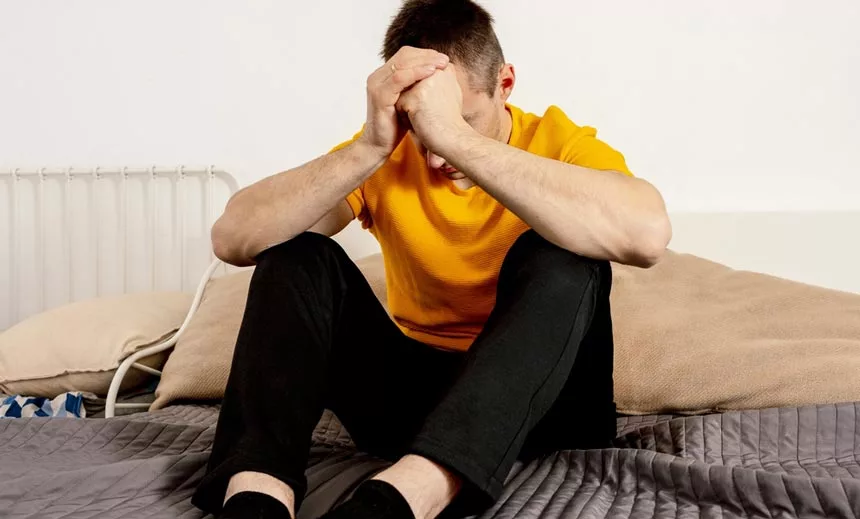The Risks of Using Morphine for Long Term Severe Pain Relief
Table of Contents
- The Risks of Using Morphine for Long Term Severe Pain Relief
- What is the Morphine Half-Life?
- How Long Does Morphine Stay In Your System?
- What are the Side Effects of Abusing Morphine?
- Knowing the Signs and Symptoms of Morphine Overdose
- Recognizing the Signs of Morphine Addiction
- Morphine Withdrawal Symptoms and Estimated Timeline
- What are Effective Morphine Addiction Treatment Methods?
- The Importance of Medical Detox for Morphine
- Inpatient vs Outpatient Treatment
- Finding the Right Treatment Program for Morphine
- Get Help to Overcome Morphine with Find Addiction Rehabs!
- FAQs on How Long Does Morphine Stay in Your System
Morphine sulfate, or just morphine, is a powerful opioid pain medication that is used to treat moderate or severe pain. It is available as a prescription medication and can be taken orally, injected, or applied as a skin patch.
Like several other pain medications, the Drug Enforcement Administration (DEA) classifies morphine as a Schedule II drug under the Controlled Substances Act. This means that, while morphine can treat pain in controlled doses, it also has a high risk for abuse and addiction.
For those taking this medication for severe or chronic pain relief, a question they may find themselves asking is “how long does morphine stay in your system?” Whether timing their next dose or preparing for a drug test, knowing how long it takes for this drug to leave the system is important.
Keep reading to learn more about the morphine metabolism rate, and how you can find help if you or a loved one is struggling with an addiction to prescription opioids using the services of Find Addiction Rehabs.
What is the Morphine Half-Life?

The half-life of morphine is typically 2 to 3 hours. This means that it takes 2 to 3 hours for the body to eliminate half of the morphine that has been taken. The half-life of morphine can be affected by a number of factors, including age, weight, liver function, and kidney function.
In general, older adults and people with liver or kidney problems will have a longer half-life for morphine. When using this drug to manage severe pain, it is important to only use it in its prescribed dose and for legitimate medical treatment purposes. Recreational use of this drug is illegal and can have severe consequences.
How Long Does Morphine Stay In Your System?
When preparing for drug tests, the amount of time morphine stays in your system can vary depending on a number of factors, including your metabolism, how much morphine you took, and what type of drug testing is being used. In general, morphine can be detected in the following:
- Urine Tests: Morphine can be detected in urine for up to 3 days after the last dose.
- Blood Tests: Morphine can be detected in blood for up to 24 hours after the last dose.
- Saliva Tests: Morphine can be detected in saliva for up to 12 hours after the last dose.
- Hair Tests: Morphine can be detected in hair for up to 90 days after the last dose.
It is important to note that these are just general guidelines for detecting morphine with drug tests. The actual amount of time morphine stays in your system and how long each of these tests can detect morphine will vary depending on the factors mentioned above.
If you are concerned about how long morphine will stay in your system, you should talk to your doctor. A positive drug test can have serious consequences in multiple areas of your life, but it can also be a wake-up-call that it is time to seek help for your dependence on this opiate drug.
What are the Side Effects of Abusing Morphine?

Morphine affects the central nervous system by binding to mu-opioid receptors in the brain and spinal cord, which are responsible for pain signals in the body. This interaction can help to relieve moderate to severe pain, as well as produce a euphoric high that can get users hooked on this opioid drug.
Both psychological dependence and physical dependence can occur with long-term morphine use. Even a single dose of this opioid analgesic can introduce users to its pleasant side effects and cause them to want to continue taking morphine.
Whether taking this medication for pain management or recreationally, morphine can be abused, and when it is, it can have serious side effects. Some of the short-term side effects of morphine abuse include:
- Drowsiness
- Slowed breathing
- Low blood pressure
- Confusion
- Slurred speech
- Nausea and vomiting
- Constipation
- Sweating
- Pinpoint pupils
- Hallucinations
- Dizziness
- Anxiety
- Restlessness
- Headache
- Dry mouth
Long Term Morphine Side Effects
Some of the more long-term side effects of morphine abuse can include the following symptoms and conditions.
- Addiction
- Tolerance
- Withdrawal symptoms
- Depression
- Anxiety
- Mood swings
- Memory problems
- Cognitive impairment
- Liver damage
- Kidney damage
- Heart damage
- Lung damage
- Bone marrow suppression
- Immune system suppression
- Infertility
- Death
If you or someone you know is abusing morphine, it is important to seek help. Getting professional medical advice and speaking with addiction specialists, like the Find Addiction Rehabs representatives, can help you find recovery services that will allow you to overcome your physical and psychological dependence on this medication.
Knowing the Signs and Symptoms of Morphine Overdose

Whether using this medication to relieve pain or for its euphoric properties, it is important to keep in mind that morphine is highly potent and can have severe consequences with improper use. When taken in large amounts or mixed with other medications and substances, morphine can cause an overdose.
Symptoms of a morphine overdose can include:
- Slow or shallow breathing
- Respiratory depression
- Constricted pupils
- Drowsiness
- Confusion
- Seizures
- Coma
- Death
If you think someone is experiencing an opioid overdose, it is important to call 911 immediately. While waiting for help to arrive, you can try to keep the person awake and talking. You can also try to induce vomiting if the person is conscious and alert. Do not give the person anything to eat or drink if they are unconscious.
If you are prescribed morphine, it is important to take it exactly as directed by your doctor. Do not take more than the prescribed amount, and do not share your medication with others. If you are concerned about addiction, know that there is help available.
There are many resources available to help you manage your pain and reduce your risk of addiction. The Find Addiction Rehabs team can help you find addiction treatment options that will help you achieve long-term recovery from opioid abuse and dependence.
Recognizing the Signs of Morphine Addiction
As discussed, morphine can be highly addictive, and people who abuse it can experience a variety of physical and psychological symptoms. There are many signs of morphine addiction that you can look out for when trying to determine if a loved one is struggling with this drug.
Some of the most common physical signs and symptoms may include:
- Worsening pre-existing or developing new medical and mental health disorders due to morphine abuse.
- Experimenting with different methods of use, including oral morphine consumption, morphine injection, and other risky means of using the drug.
- Tolerance to the drug, meaning that the person needs to take more and more of it to achieve the same effect.
- Withdrawal symptoms, such as anxiety, depression, insomnia, and muscle aches, if the person stops taking the drug.
There are psychological symptoms that can be looked out for as well, including:
- Craving for the drug.
- Obsession with getting and using the drug.
- Loss of interest in activities that were once enjoyable.
- Lying to family and friends about drug use.
- Stealing money or other items to support drug use.
- Changes in personality, such as becoming more irritable or aggressive.
- Difficulty concentrating or making decisions.
- Depressed mood.
- Thoughts of suicide or self-harm.
If you are concerned that you or someone you know may be addicted to morphine, it is important to seek help immediately. There are many resources available to help people overcome addiction, and the sooner treatment is started, the better the chances of success.
Morphine Withdrawal Symptoms and Estimated Timeline

The timeline of morphine withdrawal can vary depending on a number of factors, including the length of time the individual has been using morphine, the dosage they were taking, and their overall health. However, in general, the withdrawal process can be divided into three phases:
Acute Opiate Withdrawal
The first phase is typically referred to as acute or early withdrawal, and typically begins within 6-12 hours of the last dose of morphine and can last for up to 7 days. Symptoms during this phase will mostly involve physical withdrawal symptoms, which can include:
- Restlessness
- Insomnia
- Muscle aches and pains
- Stomach cramps
- Diarrhea
- Vomiting
- Anxiety
- Cold sweats
- Goosebumps
- Runny nose
- Piloerection (goosebumps)
Intermediate Phase of Withdrawal
The intermediate opiate withdrawal phase typically begins after the first week of withdrawal and can last for up to 2 weeks. Symptoms during this phase can include:
- Depression
- Irritability
- Fatigue
- Difficulty concentrating
- Anhedonia (loss of pleasure)
- Cravings for morphine
Final Stage and Post Acute Withdrawals
The final stage of withdrawal typically begins after the second week and can last for up to 6 months. Many people will not experience this stage, but those who do may have symptoms such as:
- Anxiety
- Insomnia
- Irritability
- Fatigue
- Difficulty concentrating
- Anhedonia (loss of pleasure)
- Cravings for morphine
It is important to note that the withdrawal process can be very difficult and uncomfortable, and it is important to seek professional help if you are struggling to cope. There are a number of medications that can help to ease the symptoms of withdrawal, and there are also a number of support groups and other resources available to help you through the process.
What are Effective Morphine Addiction Treatment Methods?
There are a number of treatment options available for morphine addiction. The best treatment option for you will depend on your individual needs and circumstances. Some of the most common treatment options for morphine addiction include:
- Medication-assisted treatment (MAT): MAT involves the use of medications to help you manage your withdrawal symptoms and cravings, and to reduce your risk of relapse. The most commonly used medications for MAT are methadone, buprenorphine, and naltrexone.
- Inpatient rehab: Inpatient rehab is a more intensive treatment option that typically lasts for 30-90 days. Inpatient rehab provides you with around-the-clock medical care from licensed medical professionals, therapy, and support from other people in recovery.
- Outpatient rehab: Outpatient rehab is a less intensive treatment option that typically lasts for 6-12 months. Outpatient rehab allows you to continue living at home while you receive therapy and support from other people in recovery.
- 12-step programs: 12-step programs, such as Narcotics Anonymous (NA) and Alcoholics Anonymous (AA), can provide you with support and guidance as you recover from addiction.
- Therapy and counseling: Behavioral therapies, counseling, and holistic treatments can help you to understand the underlying causes of your addiction and to develop coping skills to help you manage your cravings and stress.
The Importance of Medical Detox for Morphine

Medical detox is the process of safely and comfortably withdrawing from opioids under the supervision of a medical professional. It is an important first step in the treatment of opioid addiction, as it can help to reduce the risk of serious complications, such as seizures, heart attack, and stroke.
In some cases, withdrawal symptoms occur that can be so severe that they lead to relapse. Medical detox can help to manage these symptoms and make the withdrawal process more bearable with constant medical supervision and support.
There are a number of different methods that can be used during the medical detox process. The most common method is to use medications that help to reduce the severity of withdrawal symptoms and drug cravings. These medications can be prescribed by a doctor or nurse practitioner.
In some cases, medical detox may be done in a hospital or inpatient setting. This is usually necessary for people who are at high risk for complications, such as those who have a history of seizures or heart problems. However, medical detox can also be done in an outpatient setting, such as a designated drug detox center or a doctor’s office.
The length of time that medical detox takes varies from person to person. It usually takes about 5-7 days, but it can be longer for some people. After medical detox, it is important to continue with treatment for opioid addiction. This may include therapy, medication, or both. Treatment can help to prevent relapse and help you to live a sober life.
Inpatient vs Outpatient Treatment
Inpatient and outpatient rehab are two different types of treatment programs for substance abuse. Inpatient rehab is a more intensive program that requires you to live at the treatment facility for the duration of your treatment. Outpatient rehab is a less intensive program that allows you to live at home while you attend treatment sessions.
There are several factors to consider when deciding which type of rehab is right for you, including the severity of your addiction, your support system, and your financial resources.
Some of the pros of inpatient treatment services include:
- More intensive treatment.
- 24/7 access to support.
- Significantly reduced risk of relapse.
There are some cons to consider when seeking this type of treatment, including the fact that it is often more expensive than other levels of care. It will also require you to leave home for treatment, which can be disruptive to your school or work.
A Less Structured Stepdown Treatment Setting
When looking at outpatient rehab options, some of the pros of this type of treatment include:
- More affordable treatment.
- The ability to return home after treatment.
- Less disruption to your work or school.
However, it is important to consider the cons of this level of care, which include receiving less intensive treatment, less access to support, and a higher risk of relapse. For many people, inpatient rehab can offer the safety and structure they need to achieve and maintain long-term sobriety.
If you are unsure which type of rehab is right for you, it is important to talk to a healthcare professional or addiction specialist. They can help you assess your individual needs and make the best decision for your recovery.
Finding the Right Treatment Program for Morphine

Choosing the right substance use disorder treatment program can be a daunting task. There are many factors to consider, such as the type of addiction, the severity of the addiction, the individual’s needs and preferences, and the cost of treatment.
When choosing the right program, there are several steps that should be taken. Speaking with a Find Addiction Rehabs specialist can help you navigate this process and its steps, which include:
- Doing your research: There are many different types of addiction treatment programs available, so it’s important to do your research and find one that is right for you. Talk to your doctor, friends, family, and other people who have been through addiction treatment. You can also search online for addiction treatment programs in your area.
- Considering the type of addiction: Not all addiction treatment programs are created equal. Some programs are better suited for certain types of addictions than others. For example, if you are addicted to morphine, you may want to choose a program that specializes in opioid treatment.
- Considering the severity of the addiction: The severity of your addiction will also play a role in determining the type of treatment program that is right for you. If your addiction is severe, you may need to choose a program that offers inpatient treatment.
- Considering your needs and preferences: In addition to the type of addiction and the severity of the addiction, it’s also important to consider your own needs and preferences when choosing an addiction treatment program.
- Considering the cost of treatment: The cost of addiction treatment can vary greatly. Some programs are free or low-cost, while others can be very expensive. It’s important to factor in the cost of treatment and your payment options when making your decision.
Once you have considered all of these factors, you can start to narrow down your choices and find the right addiction treatment program for you. The Find Addiction Rehabs team can help walk you through this process and find rehab programs that are capable of addressing all of your preferences and needs.
Get Help to Overcome Morphine with Find Addiction Rehabs!

If you or a loved one is struggling with an addiction to morphine or any other opioid drugs, the Find Addiction Rehabs team is here to help. We can help you find drug and alcohol rehab programs nationwide that can serve all of your care needs.
Quitting morphine can be a difficult process, but with the right support, recovery is possible. Reach out to our 24/7 hotline now, and we will help you take the first step on your path to recovery today!
FAQs on How Long Does Morphine Stay in Your System
Can I Stop Taking Morphine By Myself?
It is not safe to stop taking morphine by yourself. Morphine is a powerful opioid medication that can cause withdrawal symptoms if you stop taking it suddenly. In some cases, these symptoms can be life-threatening.
If you are taking morphine and you want to stop, it is important to talk to your doctor beforehand and seek out professional treatment services. They can help you develop a safe and effective plan to taper off the medication.
How Long is the Morphine Rehab Process?
The length of the morphine rehab process can vary depending on a number of factors, including the severity of the addiction, the individual’s treatment plan, and their overall health and well-being. In general, however, the rehab process can last anywhere from 30 to 90 days.
Nicole R. is an experienced and accomplished writer with special interests in the fields of Anthropology, English, and behavioral health, and has written countless articles for newspaper publications, institutional research journals, and Find Addiction Rehabs.
Her alma matter is Florida Atlantic University in Boca Raton. Nicole hopes to spread awareness of and combat the stigmatization surrounding addiction and substance abuse treatment through her writing and work in the field.


